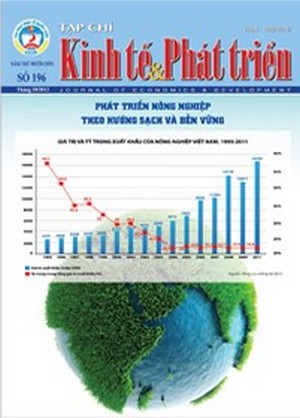Vietnam agriculture: challenges and strategic orientations for sustainable development
Abstract
Agriculture is a vital sector of Vietnam. The secor currently creates livelihoods for 68.2 percent of population, contributing to 22 percent of GDP and 23 percent of total national export earning. However, inc,:easing population and labor while decreasing agricultural land resources; low competition capacity of farm's products, low agricultural investment, insecutity of food, widened gaps among rich and poor and regions, polluted environment, climatic change as well as raising sea water level are challenging Vietnam s agricultural development. To ensure a sustainable development, the sector should: adapt open market-based agricultural planning, conserving agricultural land rather than only rice land; Improve competition capacity of agricultural products by development of farming product processing industries, increasing investment for R and D, promoting value chains as well as agricultural product branding; Increasing public and private investments in agriculture; Ensuring nutrition security by promoting food production, enhancing consumers' capacity for full access to food; Allocating resources to difficult regions to narrow down development gaps; Integrating agricultural development with environmental protection by improving the forecasting capacity, infrastructure, human resources to prevent and control natural calamities in response to climatic changes.
điểm /
đánh giá
Published
2017-11-16
Issue
Section
PHÁT TRIỂN NÔNG NGHIỆP THEO HƯỚNG SẠCH VÀ BỀN VỮNG

